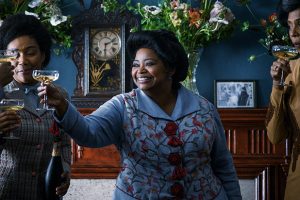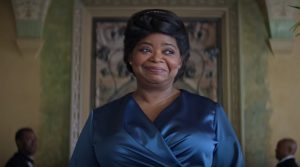It’s hard to believe it’s been almost four months since the world suddenly, shockingly lost Chadwick Boseman to cancer. Despite most of us having never known or met the man personally (and I will forever regret I never had the chance), I and millions of others around the globe were left devastated by Boseman’s death, which cut short an extraordinary career and a life lived honestly by a humble, kind-hearted, man. It’s natural to think of “what would have been”: the films he would have gone on to make, the awards he would most surely have won, and so on. But Boseman’s posthumous filmography, which includes Ma Rainey’s Black Bottom, and numerous episdoes of the animated What If…? series for Marvel, reflects not only Boseman’s versatility as an actor, but his determination to create a lasting legacy for himself that would span vastly different mediums and genres; a legacy that stands on its own.

And that’s what makes Ma Rainey’s Black Bottom so incredibly painful to watch, as the film now feels almost too cruel for illuminating the setbacks that Black creatives have always suffered due to the efforts by mediocre white people to hijack their art and culture, not because it’s wrong to depict this by any means (quite the opposite)…but because it’s Chadwick Boseman’s character, underdog horn player Levee, who is actively being cheated out of his legacy in the film by a system that rewards theft and punishes integrity. But while some may find the pain still too raw to revisit (and as always, I encourage you to decide for yourself if that’s the case), I believe that the film makes one thing clear unintentionally: that even Chadwick Boseman’s sheer ability to carve out the beautiful, incredible legacy he has is something that cannot be taken for granted, although by rights it should – because for centuries, and right up until this present day, Black art, talent, and culture has been appropriated by white folks. And it’s up to white folks and allies of the Black community to call out that appropriation, and help to protect and preserve the legacies of Black creatives.
Ma Rainey’s Black Bottom is entirely focused on this concept of trying to build a legacy, and the harsh toll it exacts on the Black creatives who have to fight every single day to protect their work. Ma Rainey (played by Viola Davis, who herself famously called upon Hollywood to stop calling her the “Black Meryl Streep” unless they were going to start paying her accordingly) is seen as a difficult and unreasonable diva by her white manager and producer, but that’s because – as she explains in a brilliant monologue to her trombonist, Cutler (Colman Domingo) – she can’t afford to be fair and reasonable, because she knows that as soon as she lends her voice to the record album her production studio is creating, they’ll have no further use for her. She has to demand better, or she won’t be treated any better; whether that means requiring that she be served a Coca-Cola (in a prolonged sequence that, let me tell you, really made me want a Coca-Cola), or insisting that her nephew, who stutters, be featured on her biggest song, Ma Rainey’s Black Bottom, even though it takes six tries and six vinyl records to get it right.
Davis commands attention from the moment she appears onscreen, decked out in feathery finery, and literally glistening under lighting that is somehow both deeply uncomplimentary and strangely flattering to her mesmerizing stage persona. Maxayn Lewis provides Rainey’s rich, soulful, singing voice on almost all the songs in the film, but the rest is an intoxicating blend of Davis’ physical presence, her costuming department, and the particularly noteworthy efforts of her hairstyling and makeup team, whom I predict will be the Oscar frontrunners in their category. The final result of all their contributions is a bundle of joyous, irreverent charisma – a proud Black woman owning herself, her body, and her sexuality.

Her sexuality is a particularly interesting topic because the real-life Ma Rainey is strongly believed to have been a queer woman. And although the character of her girlfriend in the film, Dussie Mae (Taylour Paige), is entirely fictional, there’s evidence to suggest that Rainey did have a romantic relationship with one of her contemporaries, blues singer Bessie Smith. Depicting Ma Rainey authentically is important for several reasons, not least of all because we’ve seen very few stories of real-life Black LGBTQ+ historical figures depicted onscreen: and even fewer in a context where their sexuality is not the defining feature of their character. Ma Rainey is queer and a great singer and a savvy businesswoman…she’s allowed to be multi-faceted, and I love that.
Boseman’s Levee, meanwhile, spends a considerable amount of time trying to seduce Ma Rainey’s girlfriend away from her, much to her annoyance. A cocky, easy-going young playboy making his own music and gradually distancing himself from his older, wiser, bandmates, Levee is an antagonist to Rainey’s ambitions, but one gifted with warmth, charisma, and humanity: all talents innate to Chadwick Boseman, and which the actor easily imbues into his character…particularly in one beautifully written monologue sequence that I imagine must be taken word-for-word from the August Wilson play upon which Ma Rainey’s Black Bottom is based (like the recurring motif of Levee’s yellow shoes and the closed door in the recording studio that Levee repeatedly tries to break down, both of which came off as obviously theatrical devices to me). My biggest gripe with stage-to-screen adaptations tends to be dialogue, which can feel gratingly unnatural in movies: but while I wouldn’t say Ma Rainey’s Black Bottom doesn’t sometimes have that problem, I do think the actors – particularly Davis, Boseman, and Domingo – make it work in all the scenes that count.
The one aspect of the film that has drawn criticism, however, is the one crucial scene it adds to the screenplay: drastically changing the overall tone of the story – rather like the inverse of The Boys In The Band, which added a single, hopeful scene to the film adaptation’s ending to address criticism of the original play, Ma Rainey’s Black Bottom adds one scene that, without context, is completely mundane and uninteresting…but with context, is haunting, deeply disturbing, and a bleak reminder of how far we haven’t come since the 1920’s, and how much further we still have to go. Without getting into spoilers, I will say this much: it directly addresses the topic of cultural appropriation, and forces you to re-evaluate the entire film from that perspective. The original play did touch on this subject too, from what I understand, but not in this manner. I get why this scene was added – it’s not merely shocking, but also extremely important to the film’s central theme.

Cultural appropriation, an extension of white supremacy and imperialism, is the ultimate act of theft: the grand robbery of an entire art-form, or fashion, or tradition, or way of life, in most cases carried out by white folks who either think they’re being funny by contributing to harmful stereotypes, or are actively stealing an idea because they’ve decided they like it so much that they want to market it as something socially-acceptable for white people to buy/wear/whatever, and don’t understand or care how their actions keep the violent spirit of colonialism alive in the modern day. The latter is the more insidious of the two, and has been deeply engrained in the music and entertainment industries for over a century. How many great legacies were set in stone by Black creatives, only to be overwritten and overshadowed by white people stealing their ideas? We’ll probably never know. But I hope that Ma Rainey’s Black Bottom, for many, will be the wakeup-call they need to the terrible effects of cultural appropriation, and the need to address it now, as we head into the roaring 2020’s.
Movie Rating: 9/10





